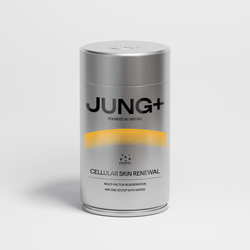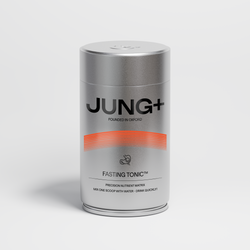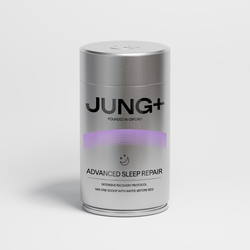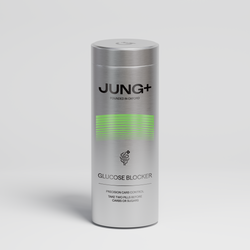To smear or not to smear—that is the question. Society invests hundreds of millions of dollars in the pursuit of youthful, firm, and elastic skin. Cosmetic companies continually develop new formulas—some of which cost hundreds of dollars—each claiming to be more effective than its predecessors.
But do creams truly live up to their promises? Or are they basically a waste of time and money?
In this article, discover why anti-aging creams often fail to deliver the results that consumers hope for because they don't address the underlying causes of skin aging. Uncover how to truly maintain youthful skin by going beyond topical treatments and targeting the actual mechanisms that lead to an aged appearance.
The Billion-Dollar Anti-Aging Cream Industry
- This thriving sector is driven by the relentless pursuit of timeless beauty.
- From high-end luxury brands to affordable drugstore products, millions of consumers seek an elixir of youthful skin by applying serums and creams.
- Campaigns often use aggressive marketing tactics and exaggerate the effectiveness of anti-aging creams.
- Bloggers and influencers also increasingly amplify these claims with filters and photoshopped images.
A critical question arises: Can these anti-aging creams truly defy time, or are they a complex mixture of wishful thinking, science, and marketing?
How Do Anti-Aging Creams Claim to Work?
Anti-aging creams often include a mixture of active ingredients designed to combat aging, such as:
Hydrating Ingredients:
- Ingredients like hyaluronic acid and glycerin aim to boost skin moisture and plump the skin.
- Glycerin forms a surface film to prevent water evaporation, decreasing dryness.
- One problem is that hyaluronic acid can't penetrate the skin well due to its large molecules (they are 2-4x larger than those the skin can absorb) (1).
- Vitamins C & E, Green Tea Extract, and Coenzyme Q10 are popular antioxidants.
- These ingredients are said to protect against environmental stress and cellular damage but often can't penetrate the skin deeply, depending on the specific formula.
- Antioxidants are also susceptible to damage from heat and light, so when these products are sitting out for months, they're even less effective. For example, vitamin C is a popular ingredient in skincare products, but it's sensitive to heat, light, and improper storage. It can degrade quickly when exposed to these elements or when applied with metal tools, which can cause the vitamin to break down. To enhance its stability in products, manufacturers use techniques like encapsulation, formulating at low pH, oxygen-tight packaging, and adding electrolytes and antioxidants.
Collagen and Elastin:
- Collagen and elastin are types of proteins that help form and repair skin, but these molecules are too large to be absorbed topically.
- Topical collagen has minimal impact on fibroblasts (cells responsible for collagen production).
The problem: None of these ingredients can significantly affect the root causes of skin aging. Hydration can be used to diminish the appearance of fine lines and wrinkles, but it doesn't stop them from forming or get rid of them for good.
The Real Drivers of Skin Aging
The drivers of skin aging are not just superficial but are rooted in deeper cellular changes. The cosmetics industry has mostly missed this point, focusing on ways to temporarily make look better, but now the ways to slow down the aging process itself at a cellular level:
Key Factors of Aging That Affect Skin:- NAD Decline: A coenzyme essential for cellular repair and metabolism.
- Senescent Cell Buildup: Accumulation of "zombie" cells that promote inflammation.
- DNA Damage & Oxidative Stress: Lead to cellular dysfunction and impaired repair mechanisms.
- 12 Hallmarks of Aging: The "12 hallmarks of aging" describe the underlying causes of aging at the cellular and molecular level, and they play a significant role in how our skin ages. Together, these hallmarks contribute to aging of the skin by diminishing its structural integrity, resilience, and appearance.
- Genomic Instability: Damage to DNA over time can cause skin cells to function poorly or die, which leads to signs of aging like wrinkles and sagging skin.
- Telomere Attrition: As cells divide, the protective caps on the ends of chromosomes (telomeres) get shorter, limiting the number of times a cell can divide. This leads to older cells that can’t renew the skin effectively.
- Epigenetic Alterations: Changes in how genes are expressed can affect how skin cells behave, leading to a reduction in skin quality and resilience.
- Loss of Proteostasis: Proteins in skin cells can become damaged or misfolded, affecting their function. This leads to issues like reduced elasticity and the formation of wrinkles.
- Deregulated Nutrient Sensing: Changes in how cells process nutrients can affect their ability to function optimally, impacting skin health and appearance.
- Mitochondrial Dysfunction: As mitochondria (the powerhouses of the cell) become less efficient, skin cells lose their vitality, contributing to dull and aged-looking skin.
- Cellular Senescence: Accumulation of tired, old cells that no longer divide but release harmful chemicals leads to inflammation and tissue damage.
- Stem Cell Exhaustion: A decline in the number of stem cells reduces the skin’s ability to repair and regenerate, making it look older.
- Altered Intercellular Communication: Poor communication between cells due to aging can disrupt skin structure and function, leading to aging signs like blotchiness and uneven skin tone.
- Loss of Immune Function: Aged immune cells are less effective, increasing susceptibility to skin damage and reducing the ability to heal.
- Chronic Inflammation: Persistent low-level inflammation can damage skin structures, contributing to the development of age spots, redness, and wrinkles.
- Microbiota Disruption: Changes in the skin’s microbiome can affect its barrier and immune response, leading to dryness, irritation, and other skin aging symptoms.
Connecting the Dots:
Longevity science gives us a real framework to understand and tackle skin aging. We can see how the hallmarks of aging interplay with different skin components, such as:
- Fibroblasts: Cells responsible for collagen and elastin production.
- Keratinocytes: Key players in maintaining the skin barrier.
- Telomere Depletion: A key aspect of aging, formulated in the '90s and awarded a Nobel Prize later (2).
- Oxidative Stress: Damages fibroblasts, leading to less collagen production and reduced firmness and elasticity.
How Skin Evolved to Protect Against Topical Products
Over millions of years, our skin has become a strong barrier protecting us from the outside world. It has developed layers and defense mechanisms to prevent harmful substances, germs, and environmental stressors.
The outermost layer of the skin, the epidermis, acts like a strong shield that keeps germs, toxins, and other threats from entering the body. Over time, it has developed into a complex structure with multiple sublayers, each offering a specific defense against external dangers.
Key features of the epidermis include:
- Keratinocytes (Skin Cells): Form tight bonds that limit the size of substances that can pass through.
- Penetration Barrier: Only compounds with a molecular weight below 500 Daltons can penetrate the skin (1).
Examples of molecular weights:
- Hyaluronic Acid: up to 12,000 Daltons (3)
- Peptides (>5 Amino Acids): Often over 800 Daltons
- Enzymes: Around 20,000 Daltons
- Collagen & Elastin: Over 120,000 Daltons
Since most cream ingredients are too large to penetrate the skin, they are simply washed away. Only smaller molecules like retinol, small peptides, and certain acids can penetrate, but even they are limited to surface layers.
Meanwhile, the skin has developed its own ability to regulate moisture levels, preventing excess evaporation while keeping outside moisture at bay. This adaptation is crucial for maintaining healthy and resilient skin.
The Limitations and Risks of Topical Creams
Topical creams are everywhere, but it's important to understand their limits and potential risks.
Limitations:
- Surface-Level Effects: They mainly work on the surface of the skin and can't reach deeper layers to tackle underlying problems.
- Temporary Improvements: They can temporarily improve hydration, texture, and fine lines, but their effects are often nonspecific.
- Effectiveness Varies: Results can differ based on individual skin type, condition, and genetics (4).
Damage to the Skin Microbiome:
- The skin hosts a variety of helpful microorganisms (microbiome) that protect against harmful germs, balance pH levels, and support hydration.
- Disrupting this balance can lead to conditions like acne, eczema, and rosacea.
- Sadly, many topical products can harm the microbiome and unintentionally shorten skin longevity (5).
Potential Risks of Topical Creams:
- Skin Irritation & Adverse Effects: Harsh ingredients or improper use can cause irritation or new skin issues, such as dryness and redness.
The Few Topical Products That Actually Work
Despite the limitations and risks of topical creams, some compounds can positively impact skin health and longevity. These include:
Vitamin C:
- Antioxidant Protection:
- Shields skin from free radical damage, which contributes to premature aging.
- Reduces the appearance of fine lines, wrinkles, and uneven skin tone.
- Collagen Synthesis:
- Essential for the production of collagen, a key protein that maintains skin's elasticity and firmness.
- Helps maintain youthful skin structure and prevents sagging.
- Skin Brightening:
- Inhibits melanin production in the skin, which is responsible for pigmentation and dark spots.
- Promotes a more even skin tone and reduces the appearance of age spots.
- Enhanced Sun Protection:
- Vitamin C's antioxidant properties enhance the skin’s natural defense against UV-induced damage.
- Complements sunscreen by neutralizing harmful free radicals from UV exposure.
It's important to note that different forms of Vitamin C have varying effects:
- Ascorbic Acid: The most potent and effective form, typically used in concentrations from 10 to 20%. Higher concentrations (20%) may irritate sensitive skin.
- Sodium Ascorbyl Phosphate: Less potent but gentler, making it suitable for all skin types.
- Magnesium Ascorbyl Phosphate: One of the most stable forms of Vitamin C.
- Sodium Ascorbate and Calcium Ascorbate: Mineral salts of Vitamin C, less effective.
- Ascorbyl Palmitate: Milder and suitable for various skin types.
Ceramides
- Protect the skin barrier and contribute to a healthy microbiome.
- Create an environment that helps beneficial microorganisms thrive while ensuring balanced coexistence (6).
Niacinamide (Vitamin B3):
- Antimicrobial Properties: Help maintain a healthy balance of skin microorganisms.
- Regulates Sebum: Creates an environment that encourages beneficial microbes while restricting harmful bacteria (7).
Retinol (Pure Vitamin A):
- Penetration: Small size allows it to reach deep skin layers.
- Receptors: Binds to retinoic acid receptors (RARs) in cell nuclei, regulating gene transcription and influencing skin pathways (8).
- Stimulation:
- Promotes keratinocyte and endothelial cell proliferation.
- Activates fibroblasts to produce extracellular matrix proteins.
- Improves adhesion of endothelial cells and leukocytes (9, 10).
- Exfoliation and Renewal: Accelerates exfoliation of old, damaged skin cells, enabling healthier cell replacement.
- Antioxidant Properties: Modulates genes involved in cell migration, immune activation, inflammation, and matrix reorganization (8).
An Inside-Out Approach to Skin Aging
Nutrition and high-quality supplements are more crucial for longevity than anti-aging creams. While the skin acts as a barrier, it still receives nutrients from what we eat.
Balanced Diet:
A well-balanced diet rich in vitamins, antioxidants, and essential micronutrients plays a key role in maintaining skin health.
Best Foods: Fruits, vegetables, whole grains, and lean proteins provide the building blocks for healthy skin cells and collagen production.
Supplements:
Eating well and taking high-quality supplements are more effective for keeping your skin looking young than just using anti-aging creams.
Like any other organ, your skin gets nutrients from the food you eat. Eating a balanced diet that's full of vitamins, antioxidants, and essential nutrients is key to keeping your skin healthy. Foods like fruits, vegetables, whole grains, and lean proteins give your skin the right materials to stay healthy and produce collagen.
What's more, taking vitamins and supplements can be more effective than just applying creams or relying on food alone. Aging is complex, and no single supplement can stop it entirely, but using a mix of them might address different aging concerns.
For instance, Cellular Skin Renewal contains active collagen peptides, which have been shown to boost collagen in the skin. This product also contains antioxidants, including the form of vitamin C called ascorbic acid, which helps protect fibroblasts and new collagen fibers from oxidative damage due to stress, pollution, and other factors. Additionally, it contains hylaluronic acid to help keep your skin hydrated, plump, and glowing.
Cellular Skin Renewal goes beyond what topical creams and serums can do, as it's the only skin supplement that uses the latest breakthroughs in longevity science. This comprehensive supplement tackles all major aspects of biological skin aging from within. It supports the cellular and capillary health, eliminates aging senescent cells, boosts NAD+, collagen, and hyaluronic acid production, and combats aging accelerators like Advanced Glycation End Products (AGEs) caused by sugar intake.
By addressing the root causes of skin aging, Cellular Skin Renewal can help diminish wrinkles, enhance skin elasticity, and even out skin tone and texture.
While a healthy diet and lifestyle matter, think about how many oranges you would need to eat daily to get enough vitamin C. And remember to consider allergies, the cost of fresh produce, and the daily commitment to eating these foods. Quality supplements that are backed by science can help ensure your skin stays healthy and ages well.
Making Informed Decisions in the Anti-Aging Market
The anti-aging market is vast and ever-expanding, with a plethora of products promising to either speed up or slow down the aging process. If you're looking for effective solutions to maintain youthful, healthy skin, keep these points in mind:
- Different ingredients affect various skin types differently. Tailoring products to your unique needs is the first step. Visit a dermatologist for personalized information on suitable products or treatments.
- Carefully examine ingredients to identify potential allergens, irritants, or substances that may negatively affect your skin, such as fragrances and parabens.
- Over-reliance on creams can lead to neglecting internal factors like nutrition and hydration. Focus on your diet and lifestyle first and foremost.
- Ingredients that actually work include retinol, antioxidants, collagen peptides, niacinamide, and hyaluronic acid (mainly to boost moisture).
If you enjoy the way topical anti-aging creams and products feel and make your skin look, then go ahead and apply them. Just remember: no single product is a panacea. Adopt an inside-out approach to protecting your skin by incorporating nutritional supplements, reducing oxidative stress, and maintaining healthy sleep and hydration.
References:
- The 500 Dalton rule for the skin penetration of chemical compounds and drugs (2000). Experimental Dermatology.
- The Nobel Prize in Physiology or Medicine (2009). Available from: https://www.nobelprize.org/prizes/medicine/2009/illustrated-information/
- Benefits of topical hyaluronic acid for skin quality and signs of aging: From literature review to clinical evidence (2022). Dermatologic Therapy.
- Personalized skincare: from molecular basis to clinical and commercial applications (2018). Clinical, Cosmetic and Investigational Dermatology.
- Human Skin Microbiome: Impact of Intrinsic and Extrinsic Factors on Skin Microbiota (2021). Microorganisms.
- Commensal Staphylococcus epidermidis contributes to skin barrier homeostasis by generating protective ceramides (2022). Cell Host & Microbe.
- Mechanistic Basis and Clinical Evidence for the Applications of Nicotinamide (Niacinamide) to Control Skin Aging and Pigmentation (2021). Antioxidants.
- Retinoids in the treatment of skin aging: an overview of clinical efficacy and safety (2006). Clinical interventions in aging.
- Update: Mechanisms of Topical Retinoids in Acne (2022). Journal of Drugs in Dermatology.
- Topical retinol attenuates stress-induced aging signs in human skin ex vivo, through EGFR activation via EGF, but not ERK and AP-1 activation (2019). Experimental Dermatology.









